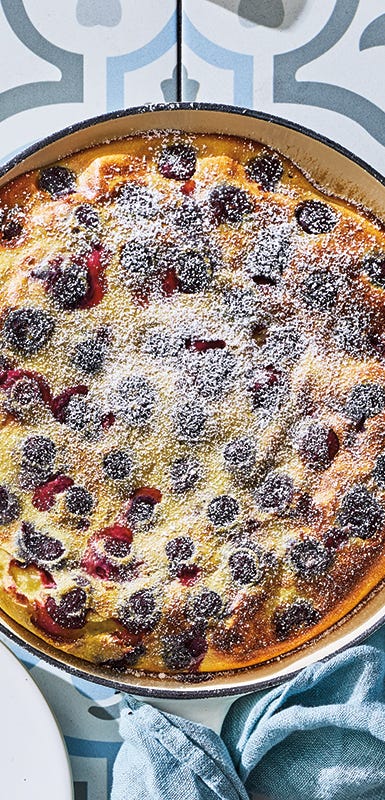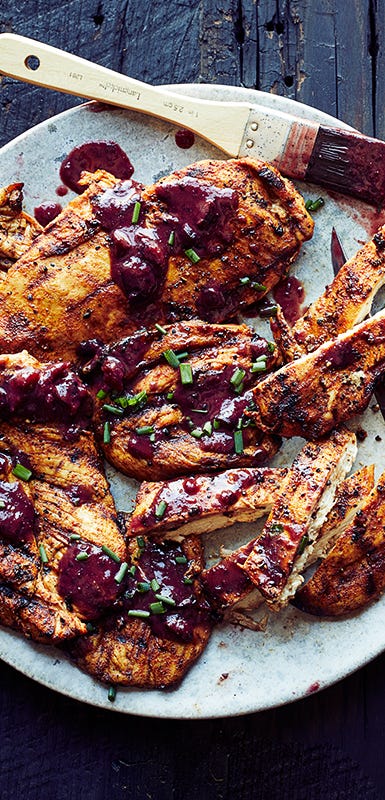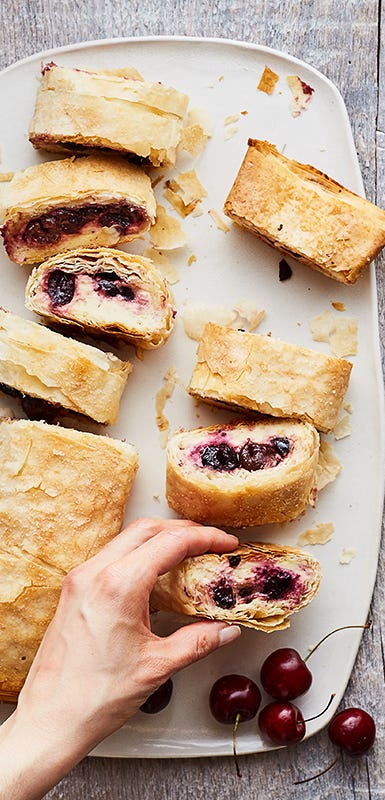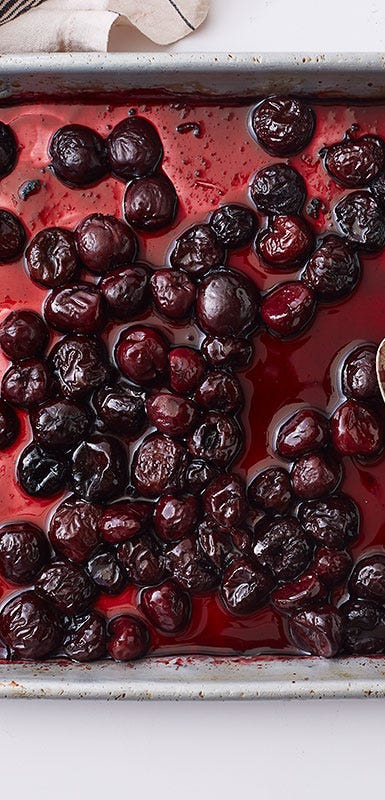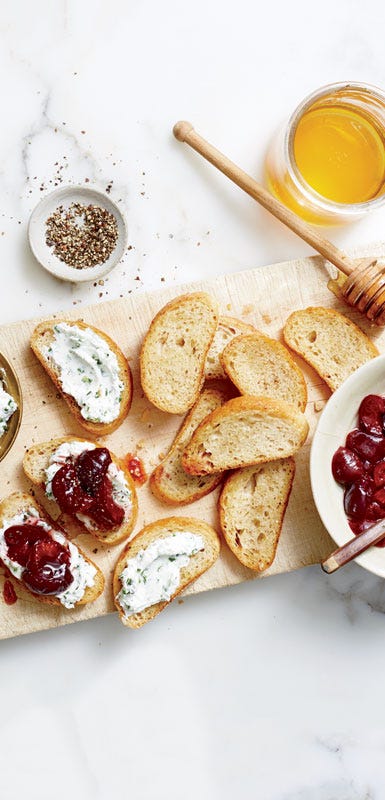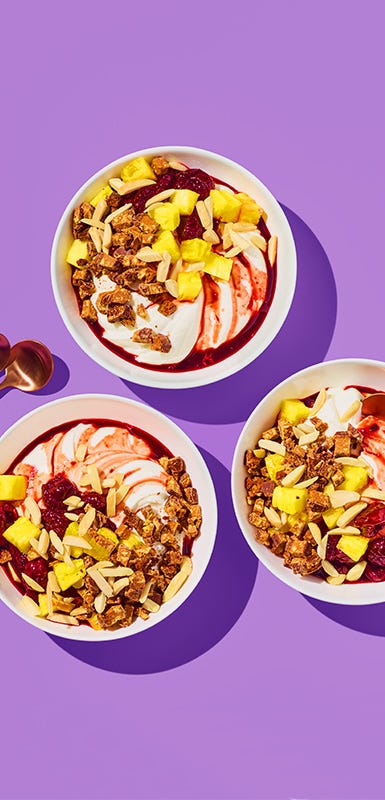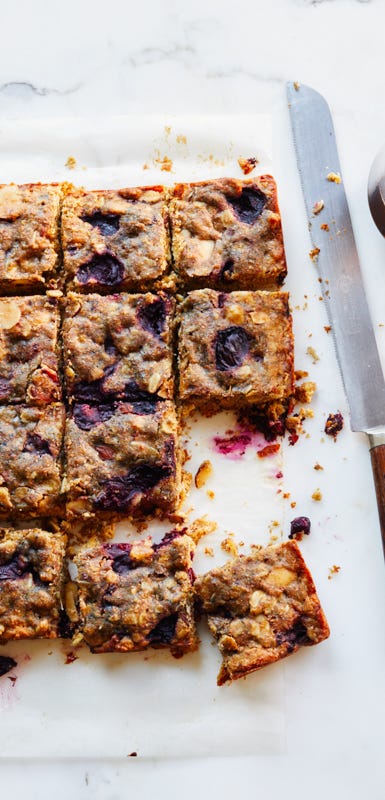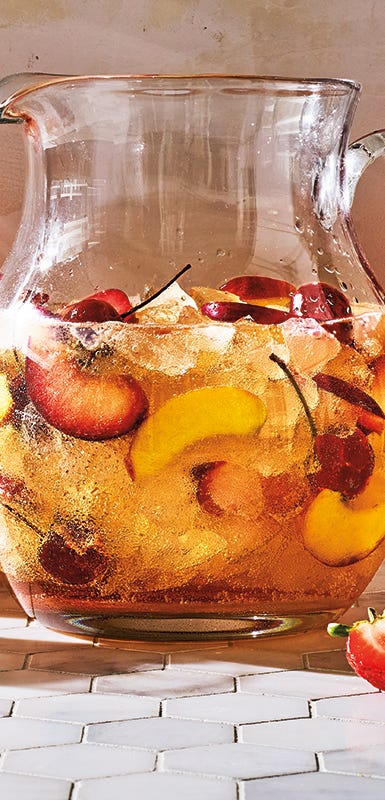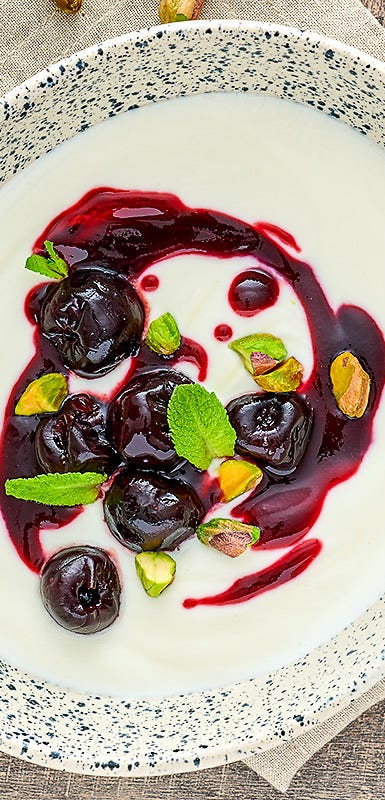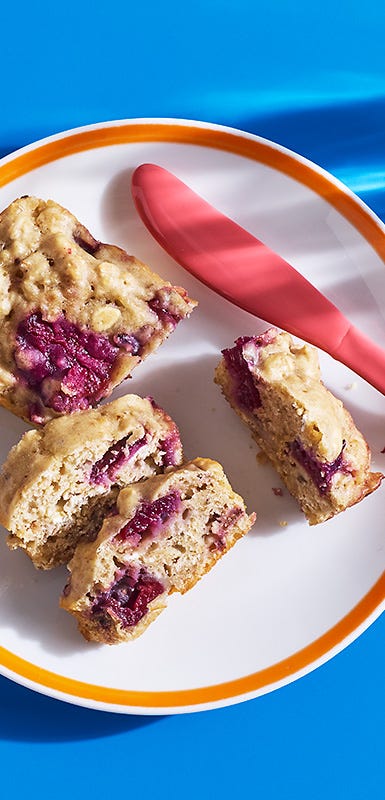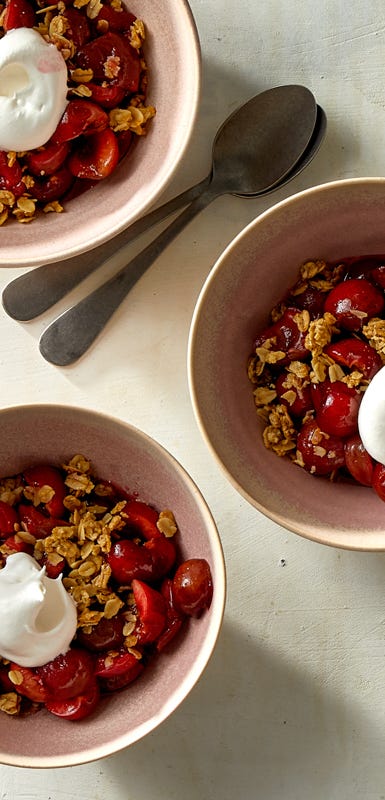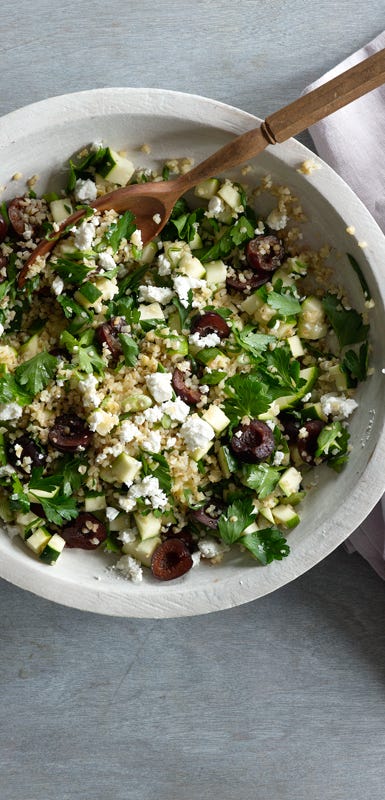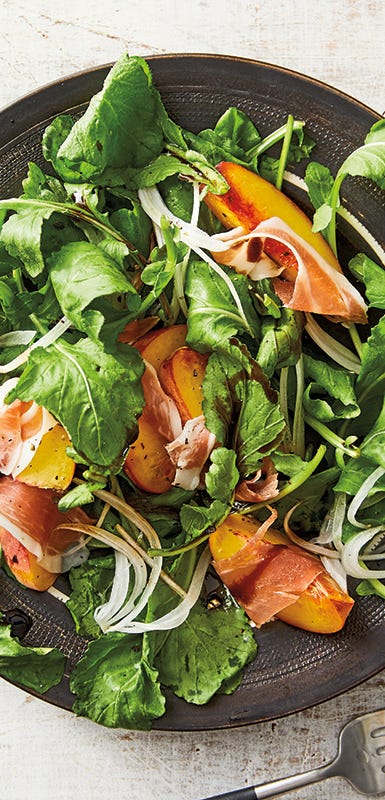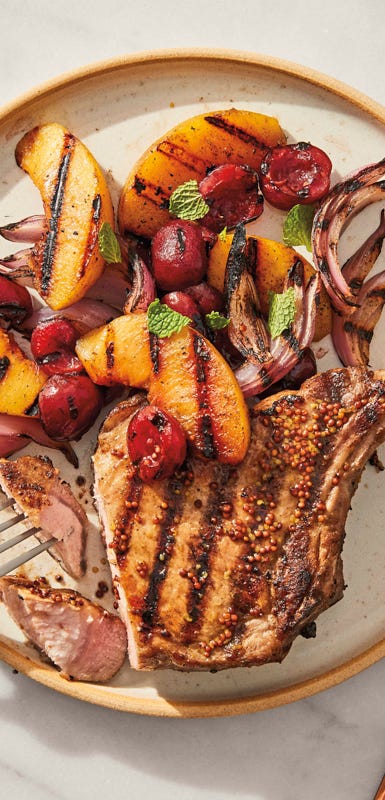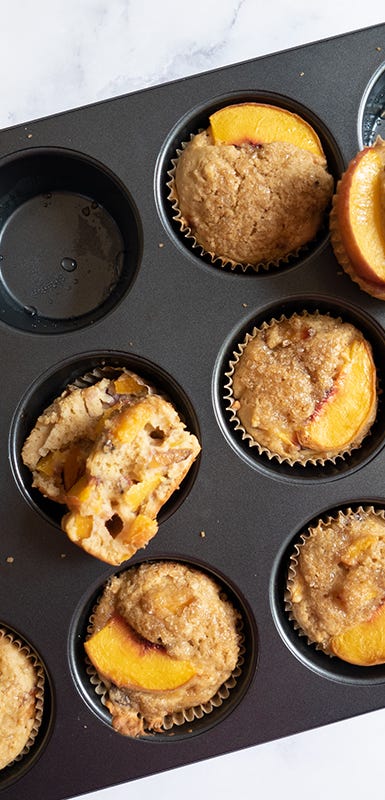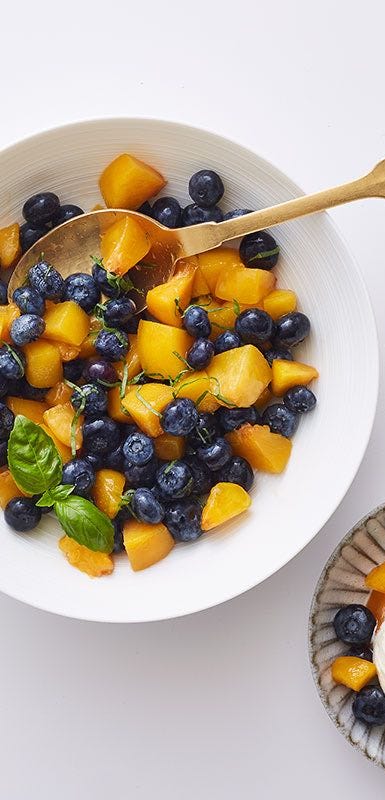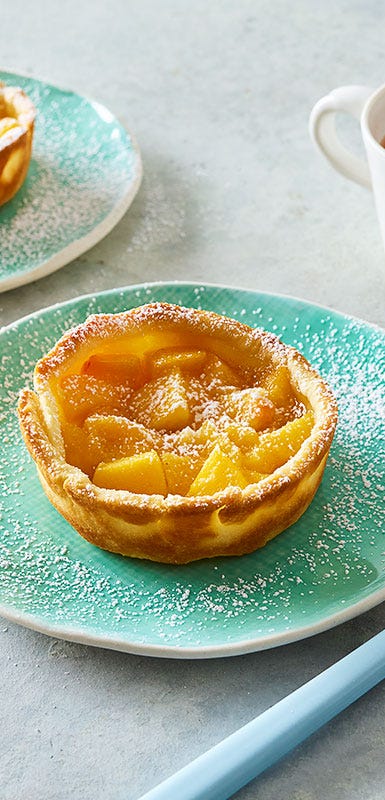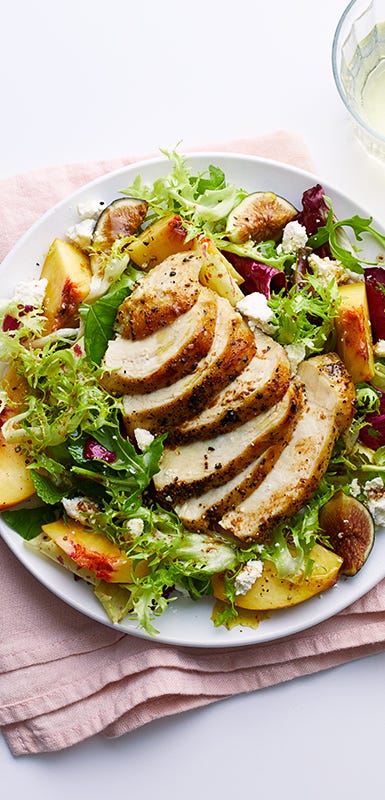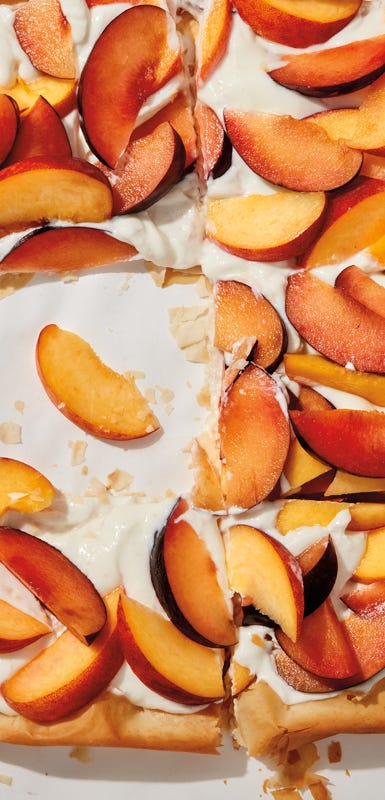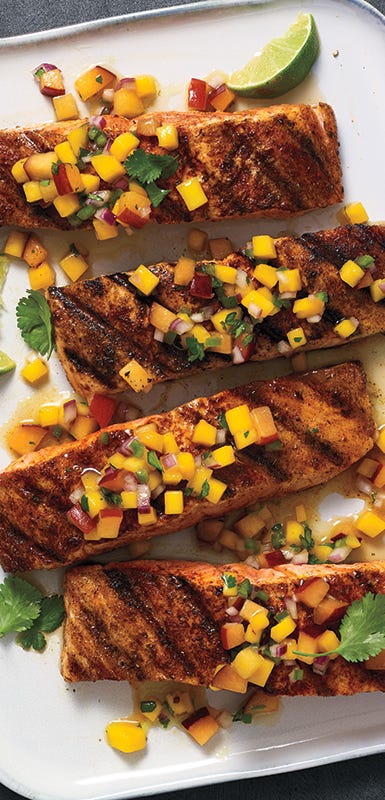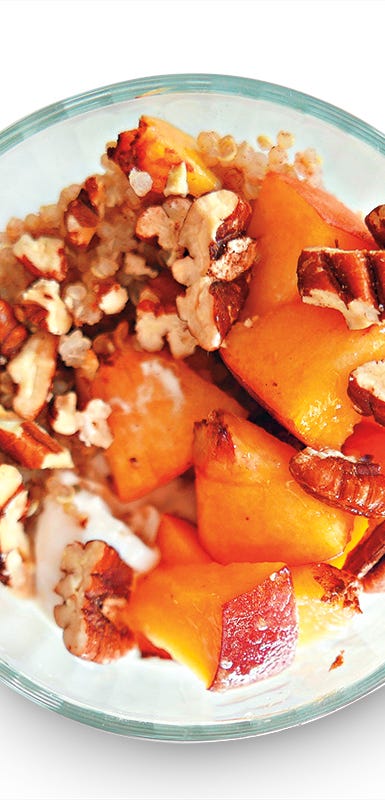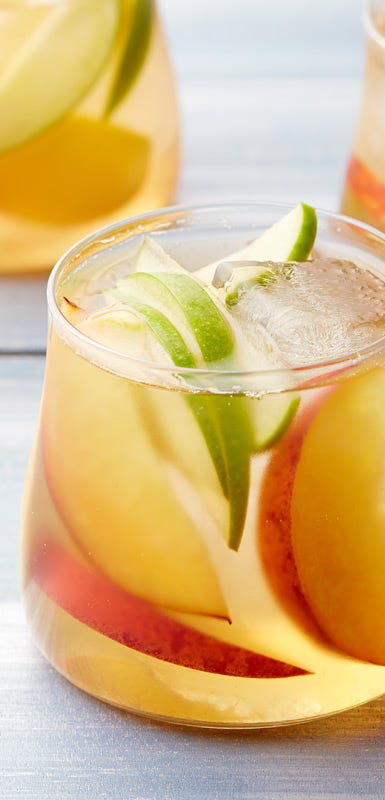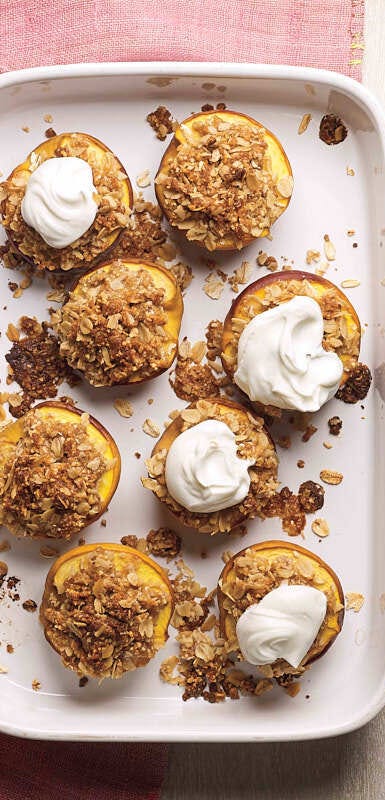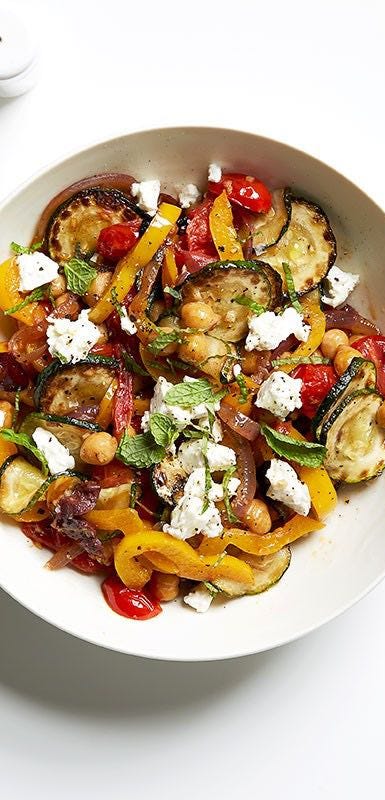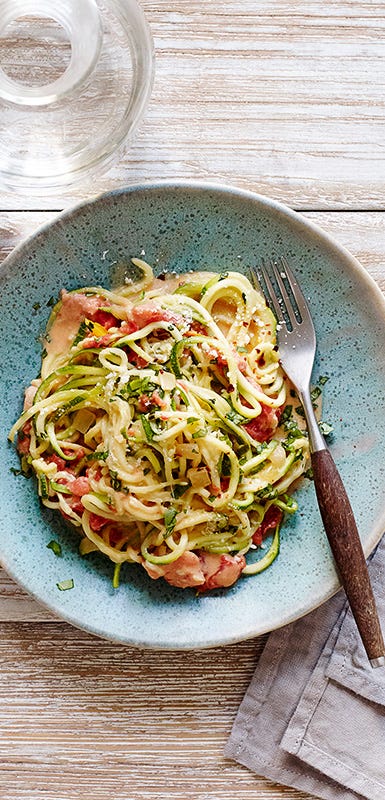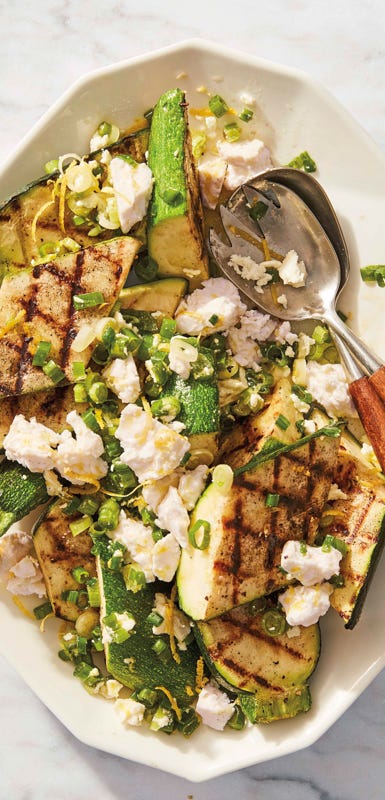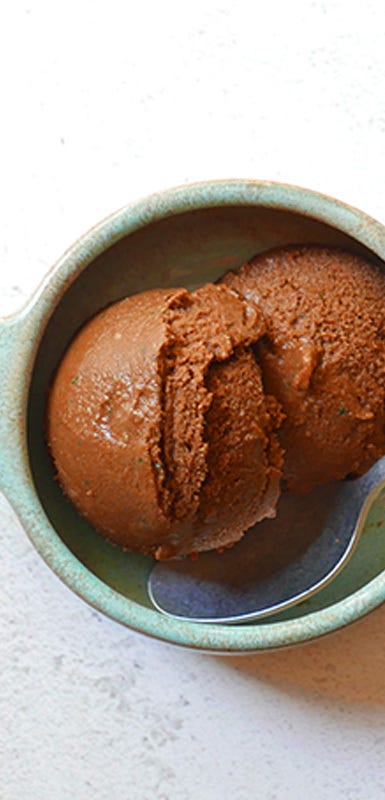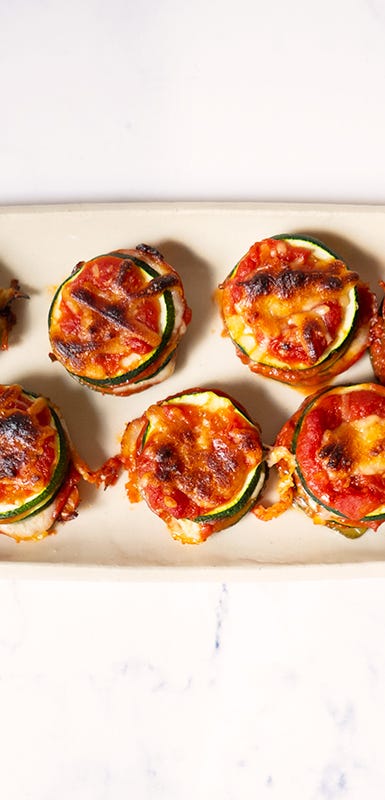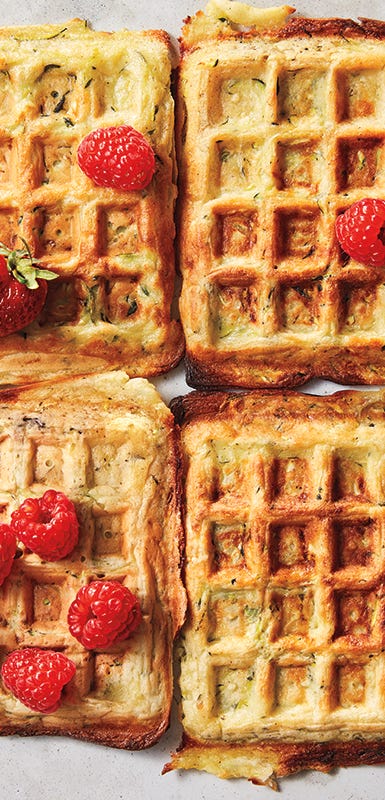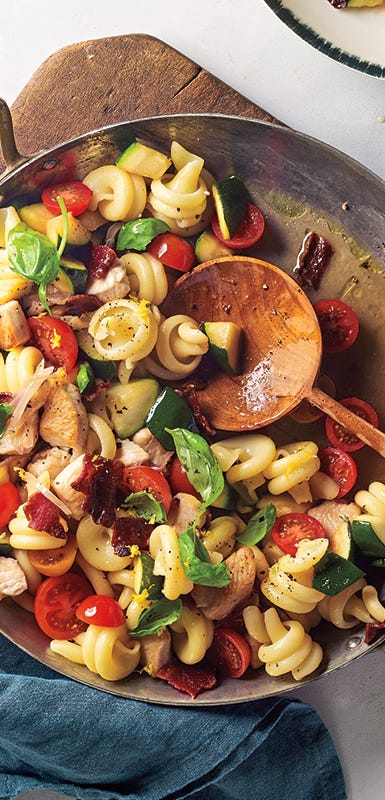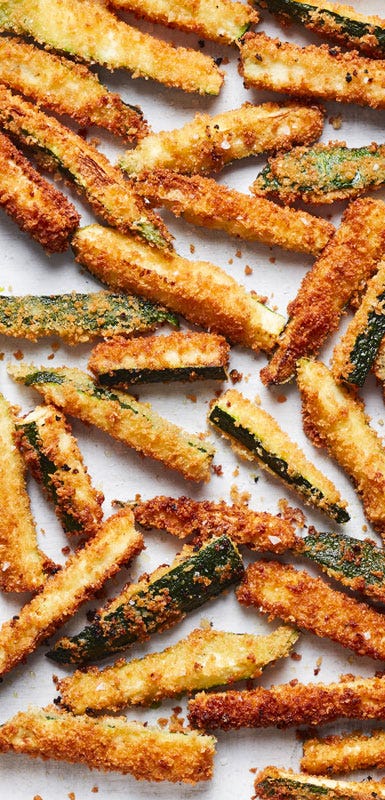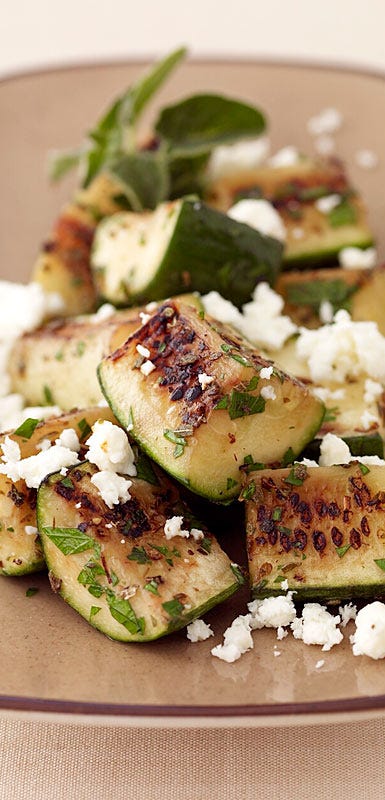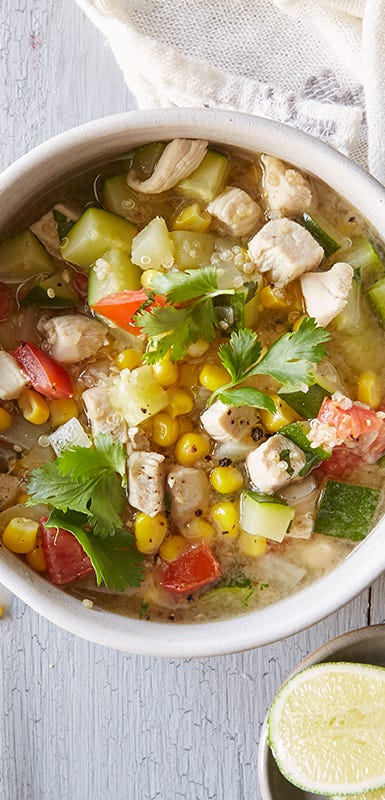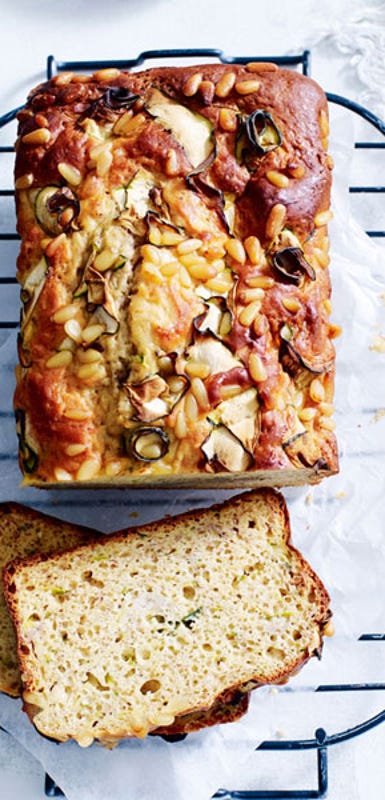36 Ways to Cook with June’s Best Produce
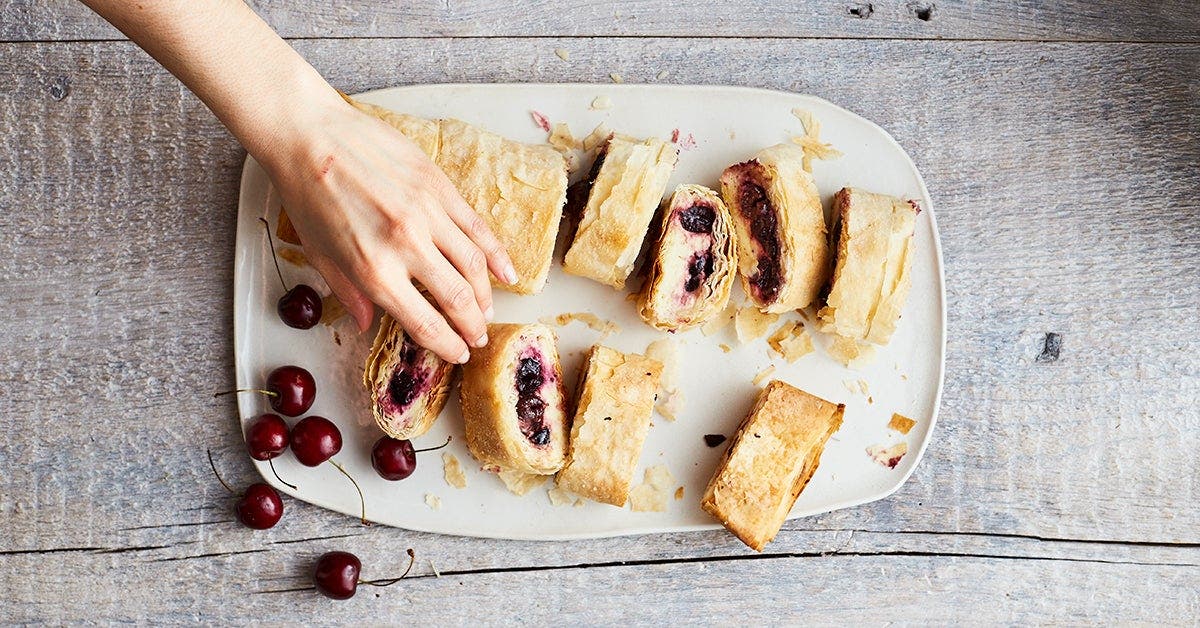
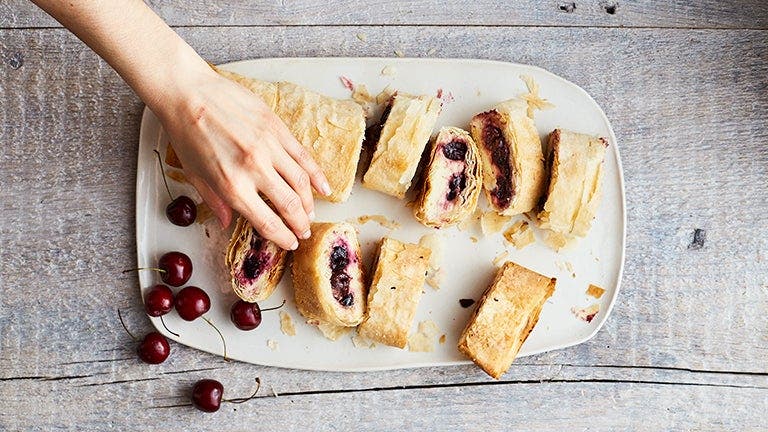
You may have been grilling and hitting the beach already, but June means the official start of summer! The pools are open, the pollen is subsiding, and the farmers’ markets are a true rainbow of colors, thanks to so much coming into season. While you really can’t go wrong this time of year, here’s how to cook with three kinds of produce that are truly at their peak in June: cherries, peaches, and zucchini.
Cherries
Cherry season is short, so enjoy them while you can! Look for dark red, firm cherries with bright green stems (though stemless cherries can still be fresh and delicious). For an extra-sweet treat, be on the lookout for red-gold Rainier cherries, which hit the market closer to July. Cherries store well for a few days at room temperature. Put them in a dry colander for a little air circulation, and don’t rinse them until you’re ready to use them. If you want them to stick around a few extra days, store them in that colander in the refrigerator. Or turn them into one of the recipes below (the breakfast bread is particularly simple and uses WeightWatchers® apple cinnamon instant oatmeal!)
The best cherry recipes
Peaches
An intense perfume-like scent is the best indicator of a good peach. The fruit should be mostly firm but have a slight give when gently squeezed. Avoid green peaches and those with bruises, soft spots, or wrinkled skin. Store ripe, unwashed peaches in your crisper drawer for three to five days. If your peaches aren’t ready when you are, here’s how to speed up ripening: Place the peaches in a paper bag with an apple or a banana (both give off ethylene gas, which hastens ripening). Loosely close the bag—you want some fresh air to circulate so the fruit doesn’t rot—and leave it in a dry area on your counter. Check after a day; ripe peaches will yield slightly to gentle pressure.
The best peach recipes
Zucchini
Look for zucchini that are firm with shiny, blemish-free skin, and that have their stems attached. Store them unwashed in a plastic bag with some holes (to allow air to circulate) in your crisper drawer for up to to five days. Wash your zucchini just before use; there’s no need to peel them. They can be eaten raw or cooked, and when spiralized, make a popular substitute for spaghetti.

